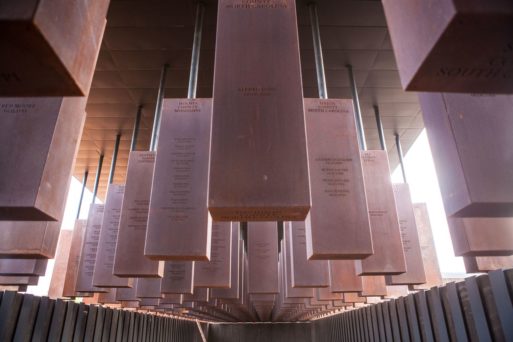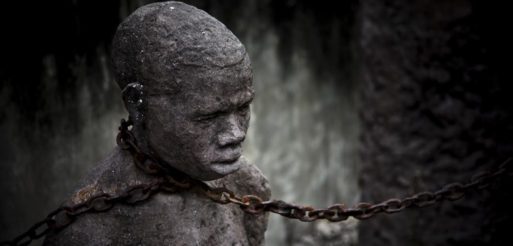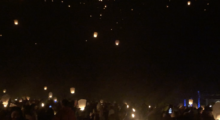An unusual memorial was unveiled recently in Montgomery, Alabama, the only one of its kind in the United States. Set on a sprawling, 6-acre site overlooking the Alabama state capitol, the National Memorial for Peace and Justice is a grim reminder of the scourge of white supremacy and a tribute to the thousands of African Americans killed in its name. At its center is a walkway with 800 steel columns, each one etched with the name of a U.S. county and a list of the black people who were lynched there. Many of the murdered victims are listed simply as “unknown.”

Credit: curbed.com
Located near the site of a former slave market, the memorial is part of an 11,000-square-foot monument created to honor the victims of thousands of racially motivated atrocities that occurred during the nation’s Jim Crow years. It began as a research project, says Bryan Stevenson, founder of the Equal Justice Initiative, the nonprofit that spearheaded the undertaking. He and a small group of lawyers combed county archives and public libraries throughout the South for years to document the killings, searching for eyewitness accounts and, most importantly, for names. Many of the victims “have never been named in public” before, Stevenson explains.
The group documented 4,400 murders in all.
From Enslavement to Mass Incarceration
The purpose of the project, explains Stevenson, is to educate the country on the effects of systemic racism, from the enslavement of thousands of kidnapped Africans to the mass incarceration of people of color that is going on today. Set alongside the memorial, the Legacy Museum recounts America’s long-standing tradition of racial inequality, using photography, videography, sculpture, and first hand accounts. Taken in their entirety, the exhibits make a compelling statement about the connection between our nation’s ugly history of slavery, segregation and racial terrorism and “a range of contemporary issues, from mass incarceration to police violence.”
The goal of the memorial is not to punish the nation, Stevenson explains. By shining a bright light on the country’s history, he hopes to encourage us to look at how racism has evolved, and to seek solutions, not blame. “I’m not interested in talking about America’s history because I want to punish America,” Stevenson continued. “I want to liberate America. And I think it’s important for us to do this as an organization that has created an identity that is as disassociated from punishment as possible.”
Working on Behalf of Incarcerated Americans
The great-grandson of Virginia slaves, Stevenson works with other members of the Equal Justice Initiative, most of whom are lawyers with clients who are currently in prison, to obtain justice for marginalized Americans. In a country that incarcerates more human beings than any other on the planet, the group seeks what Stevenson calls “just mercy,” or a chance for redemption for those who are accused of even the most egregious crimes. He fights for this sort of justice for his clients, and he is convinced that the country as a whole is deserving of the same. “If I believe that each of us is more than the worst thing he’s ever done, I have to believe it for everybody,” he says.

Credit: eji.org
Finding a route to progress won’t be easy, Stevenson admits. But he and the other lawyers at the Equal Justice Initiative are accustomed to difficult battles. And, once in awhile, they see their efforts pay off. One of the stories told at the Legacy Museum is that of Anthony Ray Hinton, who spent 28 years on Alabama’s death row after being convicted by an all-white jury of two murders he didn’t commit. Stevenson and his colleagues spent 16 years fighting for his release, eventually appealing the case to the U.S. Supreme Court. And because of their determination, today Hinton is a free man.
“I refuse to believe that it’s hopeless because I am a product of what can happen when you fight,” Hinton said in a statement. “If we don’t fight, who’s going to fight?”
Who, indeed?
If you would like more information on the Equal Justice Initiative’s research, read the full report, “Lynching in America: Confronting the Legacy of Racial Terrorism.“

 The Equal Justice Initiative Unveils a Unique Memorial
The Equal Justice Initiative Unveils a Unique Memorial


 Losing Her Constant
Losing Her Constant

 ”The Snow Sister” Directed by Cecilie Askeland Mosli
”The Snow Sister” Directed by Cecilie Askeland Mosli














